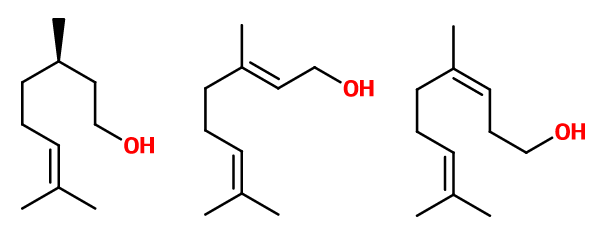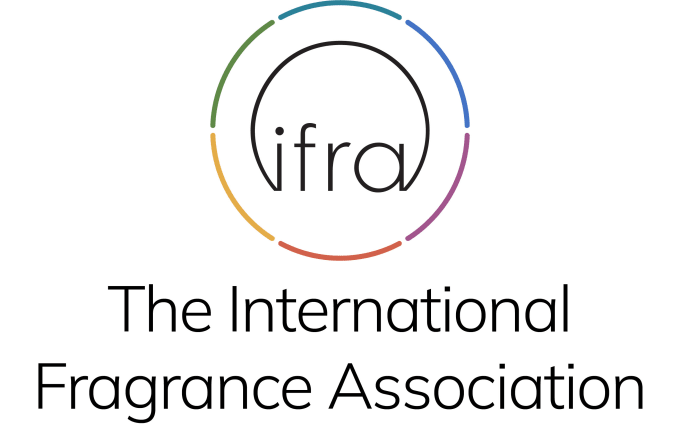
Photo credits: ScenTree SAS
| Company | Ingredient Name | ID | Comments | Naturality | Certifications | Purity | Latin name | Treated part | Geographical origin | MOQ |
|---|---|---|---|---|---|---|---|---|---|---|
|
|
Rhodinol - 30 Gr | - |
Visit website
|
- | - | - | - | - | - | |
|
|
Rhodinol Natural | CT-301 |
Visit website
|
Natural |



|
100 | Cymbopogon winterianus jowitt | Citronella Oil | Indonesia | 50 Kgs |
General Presentation
-
CAS N° : 141-25-3
-
EINECS number : 205-473-9
-
FEMA number : 2980
-
FLAVIS number : 02.228
-
JECFA number : 1222
-
Appearance : Colorless liquid
-
Density : 0,853
-
Volatility : Heart
-
Price Range : €€€
Physico-chemical properties
-
Molecular formula : N/A
-
Molecular Weight : 156,2 g/mol
-
Log P : 3,38
-
Fusion Point : N/A
-
Boiling Point : 222°C
-
Detection Threshold : Donnée indisponible.
-
Optical rotation : Donnée indisponible
-
Vapor pressure : Donnée indisponible
-
Refractive Index @20°C : Donnée indisponible
-
Acid Value : Donnée indisponible.
-
Flash Point : 99°C
Uses
Uses in perfumery :
Rhodinol 70® is used in rose, geranium, raspberry and honey notes. Useful in fougere and all other perfumes around the rose.
Year of discovery :
Discovered in 1891.
Natural availability :
Rhodinol 70® is a mixture of molecules that contains 62% Citronellol, 35% Geraniol and about 1% Nerol. It possesses the aspects of these three compounds in majority. It is not synthesized, but extracted from Geranium EO by fractional distillation. The fraction of Rhodinol 70® is collected because the three molecules that compose it have a similar volatility. Geraniol and Nerol are diastereoisomers, and Citronellol has a molar mass and a structure very close to these two compounds.
Isomerism :
Geraniol and Nerol present in Rhodinol 70® are both diastereoisomers, while Citronellol is a positional isomer of these two molecules. Here, Citronellol is a lot more present under its laevorotatory than dextrorotatory form, which makes Rhodinol 70® slightly laevorotatory.
Synthesis precursor :
Rhodinol 70® is not a precursor to the synthesis of another compound of olfactory interest.
Synthesis route :
Rhodinol 70® is not synthesized, but it is extracted from geranium essential oil by fractional distillation.
Regulations & IFRA
Allergens :
This ingredient does not contain any allergen.
IFRA 51th :
This ingredient is restricted by the 51th amendment
- Quantitative limit on the use :
-
Cat.1 Cat.2 Cat.3 Cat.4 Cat.5A B C DCat.6 2,2 % 0,67 % 13 % 12 % 3,2 % 3,2 % 3,2 % 3,2 %7,3 % Cat.5A B C DCat.6 3,2 % 3,2 % 3,2 % 3,2 %7,3 % Cat.7A BCat.8 Cat.9 Cat.10A BCat.11A BCat.12 25 % 25 %1,3 % 24 % 87 % 87 %48 % 48 %No Restriction Cat.10A BCat.11A BCat.12 87 % 87 %48 % 48 %No Restriction



